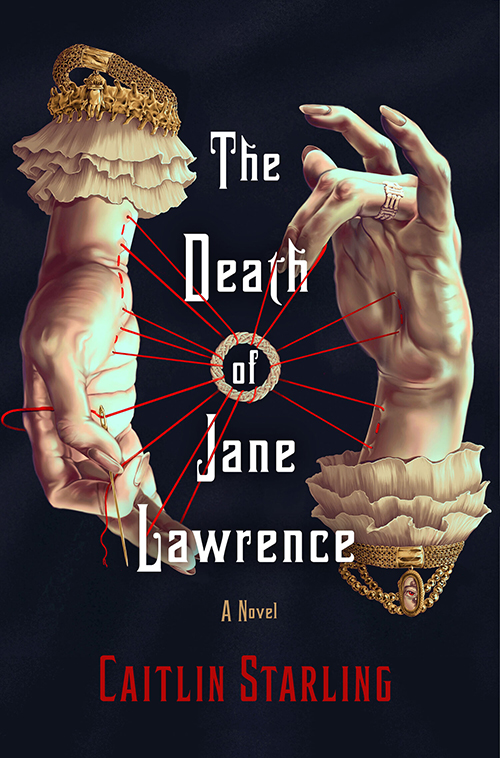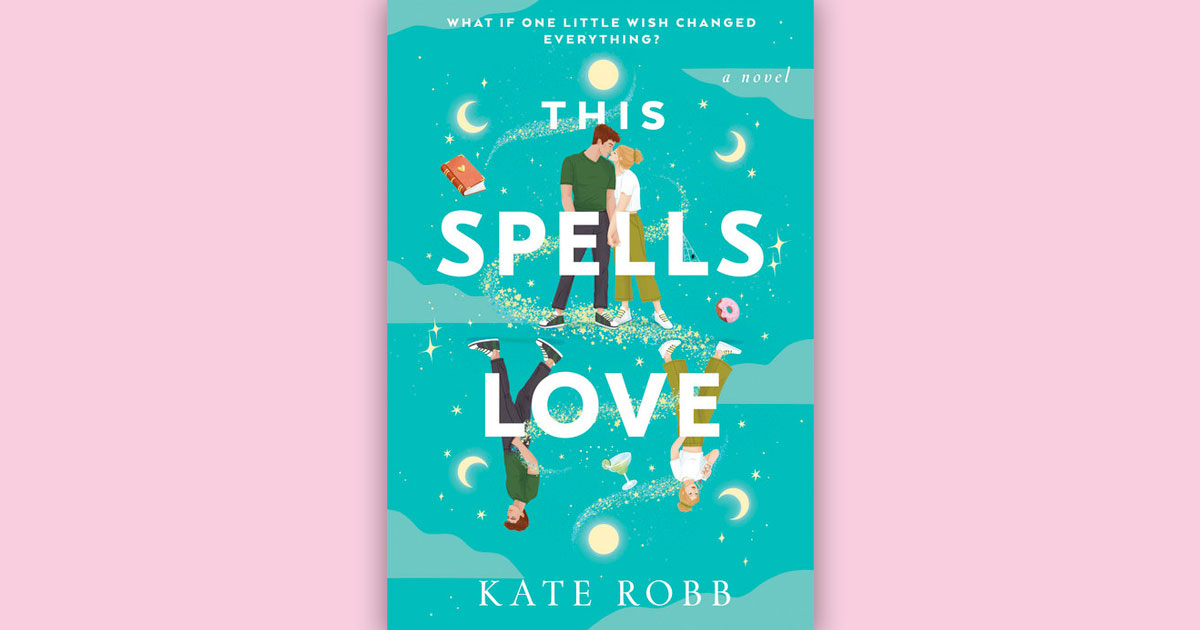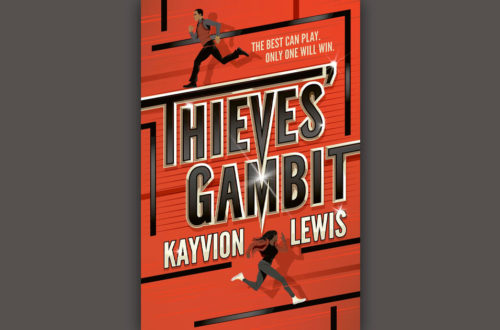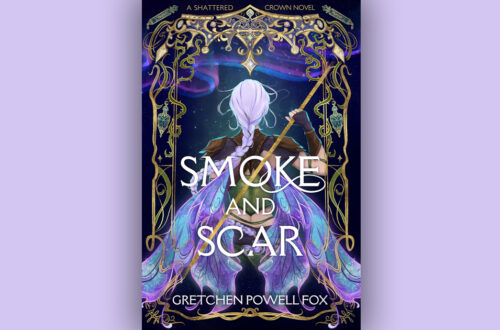The Death of Jane Lawrence by Caitlin Starling is a horror story built on a foundation of traditional gothic elements. The novel opens with Jane Shoringfield, a pragmatic and mathematically gifted woman who negotiates her own marriage of convenience to Dr. Augustine Lawrence to ensure her continued security and independence. The good doctor only has one request—that Jane spends her nights in a room above his surgery, and he in his labyrinthine home at Lindridge Hall. But that’s easier said than done, and Jane finds herself in Lindridge Hall on her wedding night, where she quickly discovers her new husband is hiding disturbing secrets about his past. That’s only the beginning of her troubles.

She wanted Augustine to be who she’d thought he was. That man would not have lied. That man would have confided in her.
Caitlin Starling, The Death of Jane Lawrence
A problem solver by nature, Jane is doggedly determined to save her husband from the vagaries of his eerie family home, even as they become more and more unexplainable. Regardless, she persists, and it is her resolve that makes her relatable if not likable. The most interesting part of Jane’s character arc is the way she questions her own monstrousness from the very beginning. At first, it’s because she fears she’s focused too heavily on logic over emotion, but as the story progresses, Jane succumbs many times to emotional whims, and interestingly enough, it is only then she becomes unrecognizable. Was she a monster before? Or is The Death of Jane Lawrence the origin story of the monster she becomes?
Starling’s use of magic as a metaphysical concept that challenges Jane’s logical and orderly view of the world is fascinating. As Jane methodically deconstructs and revises what she knows to be true, readers settle into an understanding of how magic is meant to function in Starling’s novel. Particularly creative is Starling’s use of the concept of zero as “everything and nothing,” which serves as the backbone for her depiction of magic. However, I wish Starling had done more to explain the greater role magic plays in her fictional world and why physicians, in particular, practice it. Perhaps it’s meant to parallel the arguably god-like role they take in attempting to cure or reverse injuries and illnesses. Even so, considering Jane manages to learn magic, surely physicians aren’t the only ones who practice. How common is magic in this world? It’s difficult to tell, given Jane’s humble upbringing.
Zero…an empty nothingness, but a nothingness that went on forever, for nothing could have no bounds. The infinite and zero were one. Except that the infinite was the greatest thing in the world, and zero was nothing at all. They were opposite. They were the same.
Caitlin Starling, the Death of Jane Lawrence
Starling’s prose is melodramatic and overwrought, which at first does wonders to establish the picturesque scenery of a gloomy little town in an alternate version of post-war England. However, this strength becomes a weakness during the second half of the novel, where it often feels as though readers could skip pages at a time without losing a sense of the overall plot. The extremely redundant nature of the seven-day spell Jane casts at one point was particularly tedious to read. In general, the prose is beautiful, the details unsettling and gruesome and delightfully spooky, but they’re truly unnecessary after a certain point. Kill your darlings, as they say.
The final “revelation,” which occurs in one particular chapter near the end of the novel, closes the loop with regards to several plot points that seem misleading or arbitrary until readers are plunged into that chapter. It is deeply satisfying…until the novel just keeps going! The Death of Jane Lawrence would’ve been so much spookier if everything had ended right after the revelation. I almost thought that’s where it all ended until I turned the page! Nevertheless, the actual ending is unsettling in its own right. In proper gothic fashion, readers reach the conclusion and wonder how much of it was real and whether the supernatural elements can or should be rationalized. That’s one of my favorite elements in gothic literature, and Starling executes it so well.
A magician gets what she asks for, whether she meant to ask for it or not.
Caitlin Starling, The Death of Jane Lawrence
The Death of Jane Lawrence is a creative take on gothic literature and boasts some of the creepiest scares I’ve seen recently in a novel, especially towards the beginning, when suspense is at an all-time high. I couldn’t walk past reflective surfaces at night for nearly a week without fretting a little! However, the dense prose and excessive, rambling explanations to validate the pseudo-science behind the magic only disorients the reader and makes the second half of the story drag. Despite my misgivings, it is worth checking out if you enjoyed Silvia Moreno-Garcia’s Mexican Gothic, yet another novel that puts a modern spin on the horror-gothic mash-up with a deliciously slow and suspenseful exploration of the uncanny, or other familiar gothic stories like Edgar Allan Poe’s “The Fall of the House of Usher,” Edith Wharton’s “The Lady’s Maid’s Bell,” or Henry James’ The Turn of the Screw.
Thank you to NetGalley and St. Martin’s Press for sharing an advanced reader copy of this book in exchange for an honest review.
The Death of Jane Lawrence at a glance
Book details
Title: The Death of Jane Lawrence
Author: Caitlin Starling
Publisher: St. Martin’s Press
Release Date: October 5, 2021
Page Count: 368
Synopsis
Jane Shoringfield sees the world in numbers, patterns, and logical projections, and by her math, she needs one thing above all else: a husband who wants a marriage of convenience. At the top of her list is Augustine Lawrence, a young, reclusive doctor. He agrees to her proposal, with only one requirement: she must never visit Lindridge Hall, his ancestral, crumbling house several miles out of town. He is compelled to return there each time the sun sets, despite night calls and ailing patients, but Jane must never accompany him. He says it’s just because of disrepair brought on by a country doctor’s salary, but on their wedding night, an accident brings her to his door past sundown and she finds him changed. Gone is the bold, courageous surgeon, and in his place is a confused, fearful man.
By morning, Augustine is himself again, but something is deeply wrong at Lindridge Hall. At night, strange figures stalk the halls, and Jane catches glimpses of a beautiful red-eyed woman in the mirrors and windows of the house. Augustine claims she was a patient of his who died two years before, but unexpected house guests tell a different story: her name was Elodie Lawrence, and Augustine believes he killed her.
Soon, Jane is fighting for her sanity and her life, drawn into a world of secret societies, theoretical mathematics, impossible magic, and rituals gone wrong. And now that the secrets of Lindridge Hall have met her, they’re not about to let her go.



